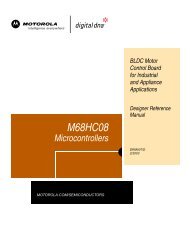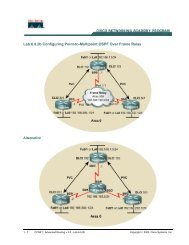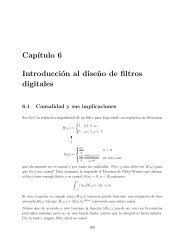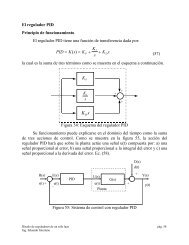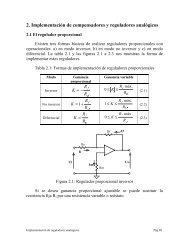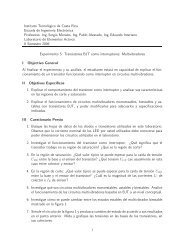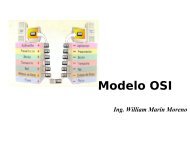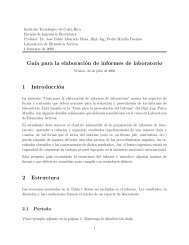Xilinx UG393 Spartan-6 FPGA PCB Design Guide
Xilinx UG393 Spartan-6 FPGA PCB Design Guide
Xilinx UG393 Spartan-6 FPGA PCB Design Guide
Create successful ePaper yourself
Turn your PDF publications into a flip-book with our unique Google optimized e-Paper software.
Chapter 2: Power Distribution System<br />
Spreading inductance acts like any other inductance and resists changes to the amount of<br />
current in a power plane (the conductor). The inductance retards the capacitor’s ability to<br />
respond to a device’s transient currents and should be reduced as much as possible.<br />
Because the designer’s control over the X-Y shape of the plane can be limited, the only<br />
controllable factor is the spreading inductance value. This is determined by the thickness<br />
of the dielectric separating a power plane from its associated ground plane.<br />
For high-frequency power distribution systems, power and ground planes work in pairs,<br />
with their inductances coexisting dependently with each other. The spacing between the<br />
power and ground planes determines the pair’s spreading inductance. The closer the<br />
spacing (the thinner the dielectric), the lower the spreading inductance. Approximate<br />
values of spreading inductance for different thicknesses of FR4 dielectric are shown in<br />
Table 2-3.<br />
Table 2-3: Capacitance and Spreading Inductance Values for Different Thicknesses<br />
of FR4 Power-Ground Plane Sandwiches<br />
Dielectric Thickness Inductance Capacitance<br />
(micron) (mil) (pH/square) (pF/in 2 ) (pF/cm 2 )<br />
102 4 130 225 35<br />
51 2 65 450 70<br />
25 1 32 900 140<br />
Decreased spreading inductance corresponds to closer spacing of V CC and GND planes.<br />
When possible, place the V CC planes directly adjacent to the GND planes in the <strong>PCB</strong><br />
stackup. Facing V CC and GND planes are sometimes referred to as sandwiches. While the<br />
use of V CC – GND sandwiches was not necessary in the past for previous technologies<br />
(lead frames, wire bond packages), the speeds involved and the sheer amount of power<br />
required for fast, dense devices often demand it.<br />
Besides offering a low-inductance current path, power-ground sandwiches also offer some<br />
high-frequency decoupling capacitance. As the plane area increases and as the separation<br />
between power and ground planes decreases, the value of this capacitance increases.<br />
Capacitance per square inch is shown in Table 2-3.<br />
<strong>FPGA</strong> Mounting Inductance<br />
The <strong>PCB</strong> solder lands and vias that connect the <strong>FPGA</strong> power pins (V CC and GND)<br />
contribute an amount of parasitic inductance to the overall power circuit. For existing <strong>PCB</strong><br />
technology, the solder land geometry and the dogbone geometry are mostly fixed, and<br />
parasitic inductance of these geometries does not vary. Via parasitic inductance is a<br />
function of the via length and the proximity of the opposing current paths to one another.<br />
The relevant via length is the portion of the via that carries transient current between the<br />
<strong>FPGA</strong> solder land and the associated V CC or GND plane. Any remaining via (between the<br />
power plane and the <strong>PCB</strong> backside) does not affect the parasitic inductance of the via (the<br />
shorter the via between the solder lands and the power plane, the smaller the parasitic<br />
inductance). Parasitic via inductance in the <strong>FPGA</strong> mounting is reduced by keeping the<br />
relevant V CC and GND planes as close to the <strong>FPGA</strong> as possible (close to the top of the <strong>PCB</strong><br />
stackup).<br />
Device pinout arrangement determines the proximity of opposing current paths to one<br />
another. Inductance is associated with any two opposing currents (for example, current<br />
flowing in a V CC and GND via pair). A high degree of mutual inductive coupling between<br />
26 www.xilinx.com <strong>Spartan</strong>-6 <strong>FPGA</strong> <strong>PCB</strong> <strong>Design</strong> and Pin Planning<br />
<strong>UG393</strong> (v1.1) April 29, 2010



